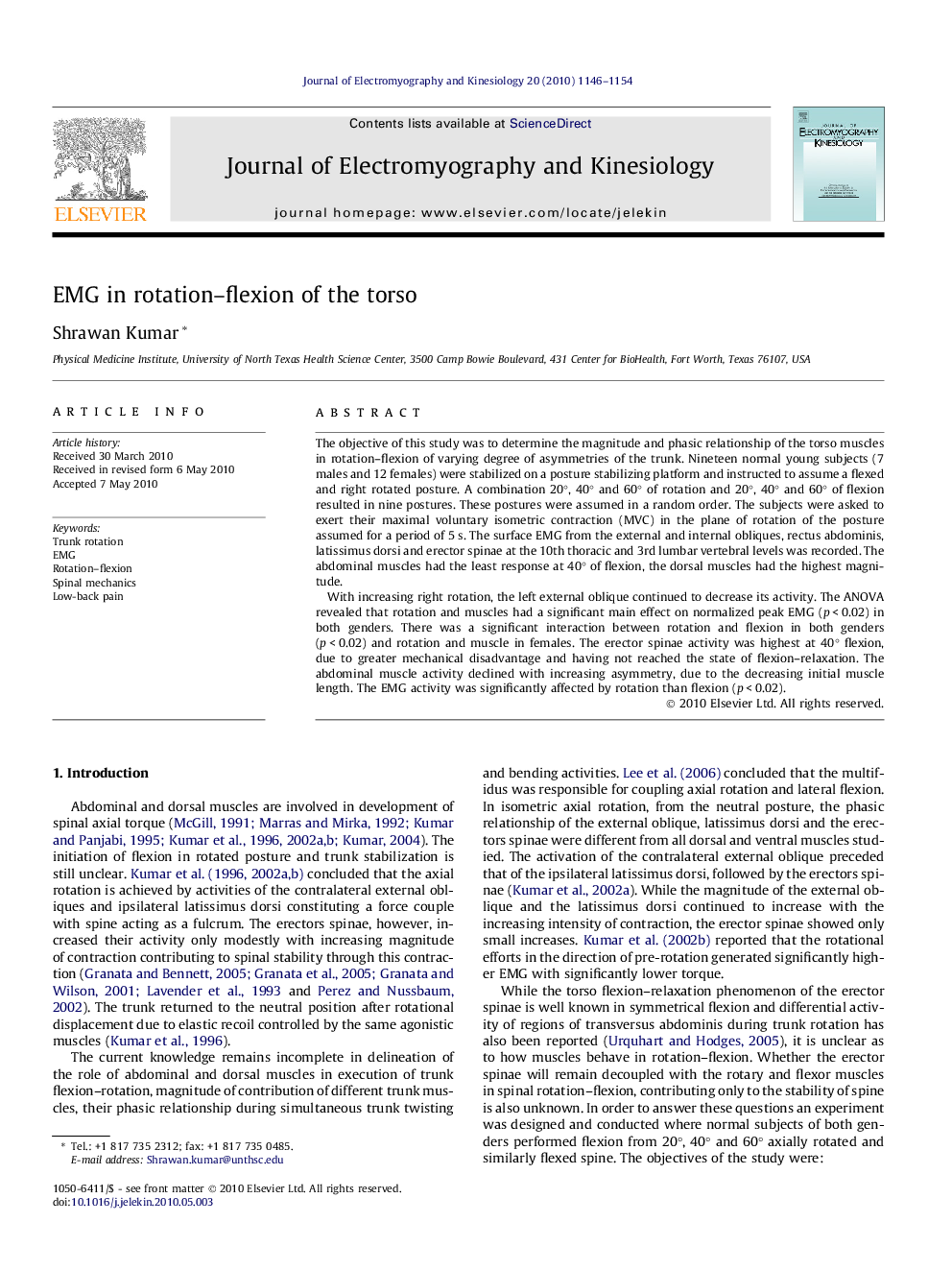| کد مقاله | کد نشریه | سال انتشار | مقاله انگلیسی | نسخه تمام متن |
|---|---|---|---|---|
| 4064934 | 1604188 | 2010 | 9 صفحه PDF | دانلود رایگان |

The objective of this study was to determine the magnitude and phasic relationship of the torso muscles in rotation–flexion of varying degree of asymmetries of the trunk. Nineteen normal young subjects (7 males and 12 females) were stabilized on a posture stabilizing platform and instructed to assume a flexed and right rotated posture. A combination 20°, 40° and 60° of rotation and 20°, 40° and 60° of flexion resulted in nine postures. These postures were assumed in a random order. The subjects were asked to exert their maximal voluntary isometric contraction (MVC) in the plane of rotation of the posture assumed for a period of 5 s. The surface EMG from the external and internal obliques, rectus abdominis, latissimus dorsi and erector spinae at the 10th thoracic and 3rd lumbar vertebral levels was recorded. The abdominal muscles had the least response at 40° of flexion, the dorsal muscles had the highest magnitude.With increasing right rotation, the left external oblique continued to decrease its activity. The ANOVA revealed that rotation and muscles had a significant main effect on normalized peak EMG (p < 0.02) in both genders. There was a significant interaction between rotation and flexion in both genders (p < 0.02) and rotation and muscle in females. The erector spinae activity was highest at 40° flexion, due to greater mechanical disadvantage and having not reached the state of flexion–relaxation. The abdominal muscle activity declined with increasing asymmetry, due to the decreasing initial muscle length. The EMG activity was significantly affected by rotation than flexion (p < 0.02).
Journal: Journal of Electromyography and Kinesiology - Volume 20, Issue 6, December 2010, Pages 1146–1154